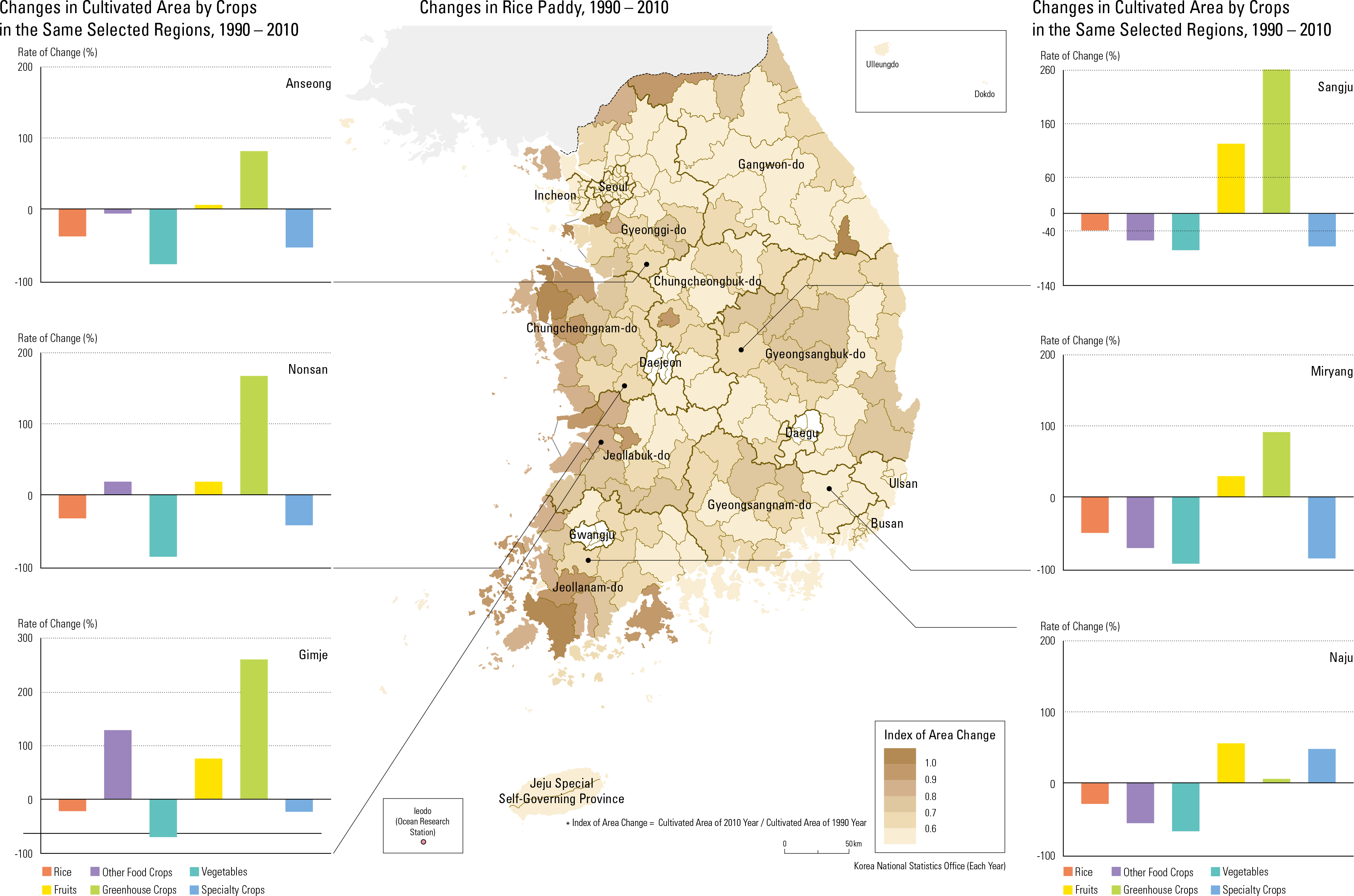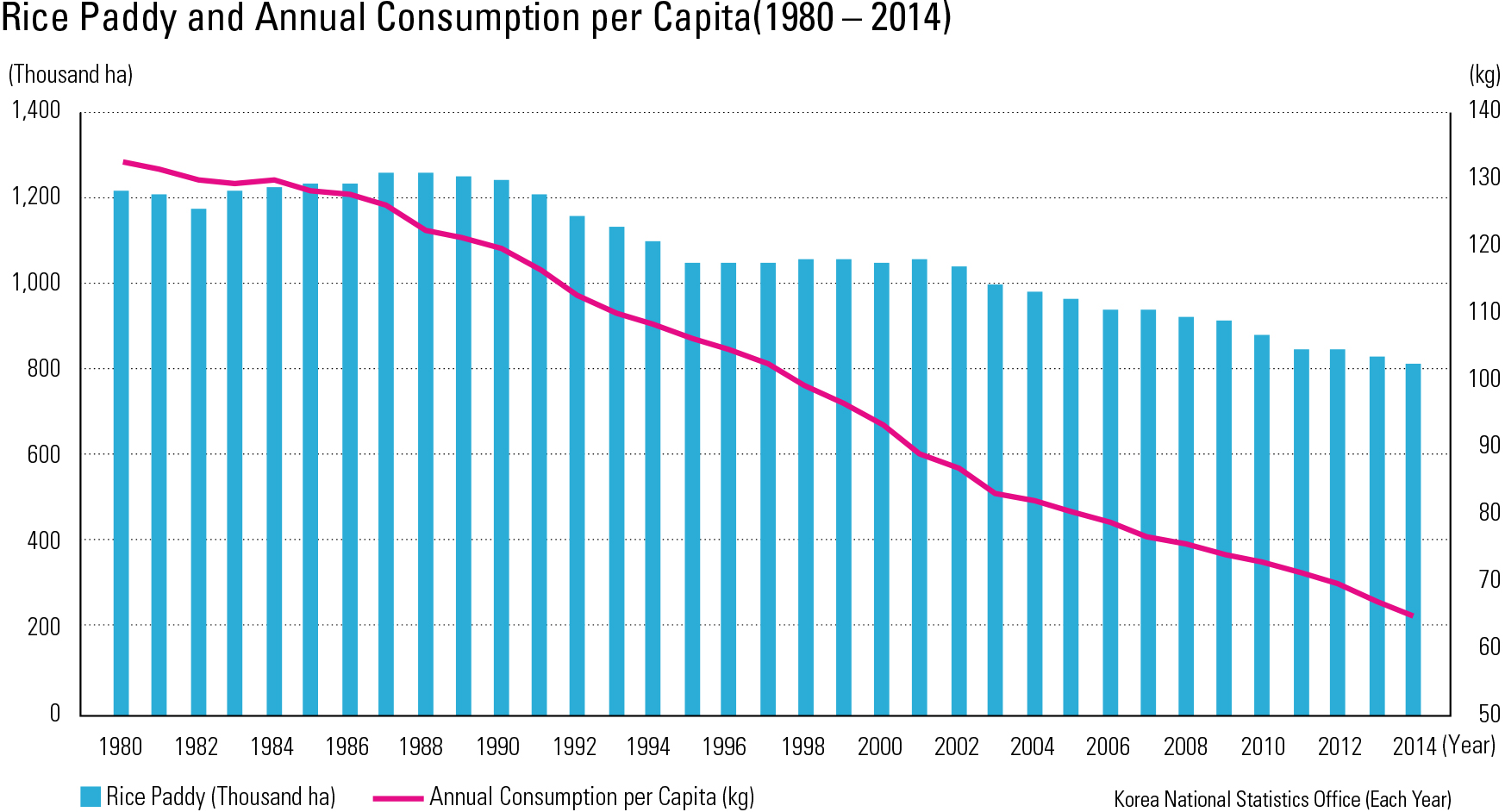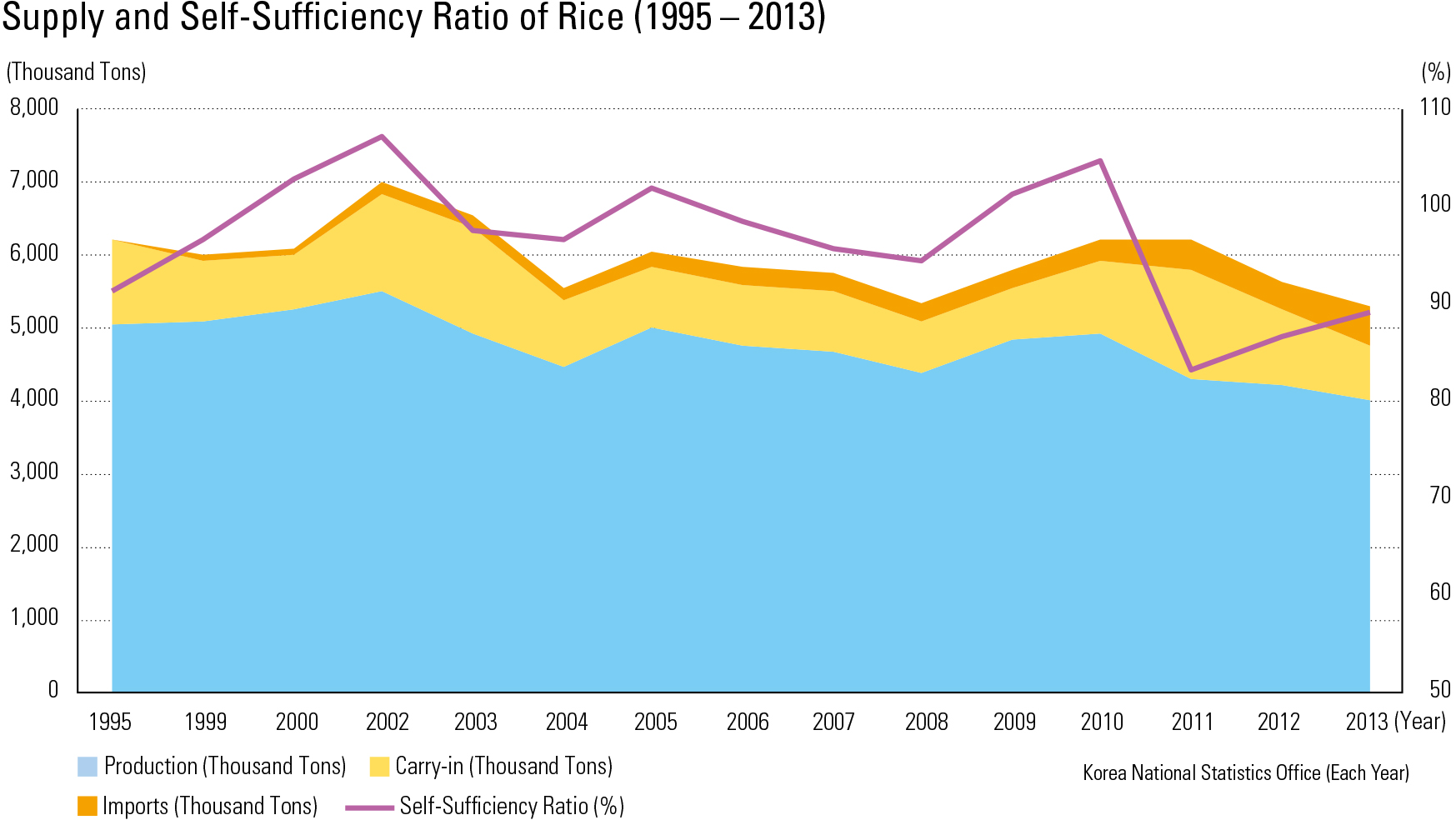English III
The most prominent change in Korean ag- ricultural production has been the decline in rice production. The rice cultivation area was about 1,220,000 hectares (3,014,686 acres) in 1980, but declined steadily to 814,000 hectares (2,011,438acres) by 2014, a reduction of 406,000 hectares (1,003,248 acres) in 34 years. Neverthe- less, the per capita annual rice consumption was greatly reduced during the same period; rice has become rather seriously oversupplied. Moreover, the amount of rice imports by MMA (Minimum Market Access) based on the WTO agreements has increased annually, which creates an added burden to the rice production oversupply problem. Eventually, many rice growers either reduced their rice crop areas or switched to other paddy to a lack of pro t. As a result, the overall rice pro- ducing area in 2010 declined compared to 1990 in most parts of the country. Even the areas that have been well known for rice production have reduced rice production and switched to other cash crops. Anseong-si in Gyeonggi-do, Nonsan-si in Chungcheongnam-do, and Naju-si in Jeollanam-do are such examples. Compared to 1990, their rice production areas ha- vedeclined by thousands of hectares, while fruits and greenhouse crops have replaced rice.This trend is confirmed by the distribution of fruit crop acreage and cultivated areas in green- house facilities. In 1990, fruit trees were grown in high density in the northern region of Gyeo- ngsangbuk-do, eastern Chungcheongbuk-do, and
page_2 |



